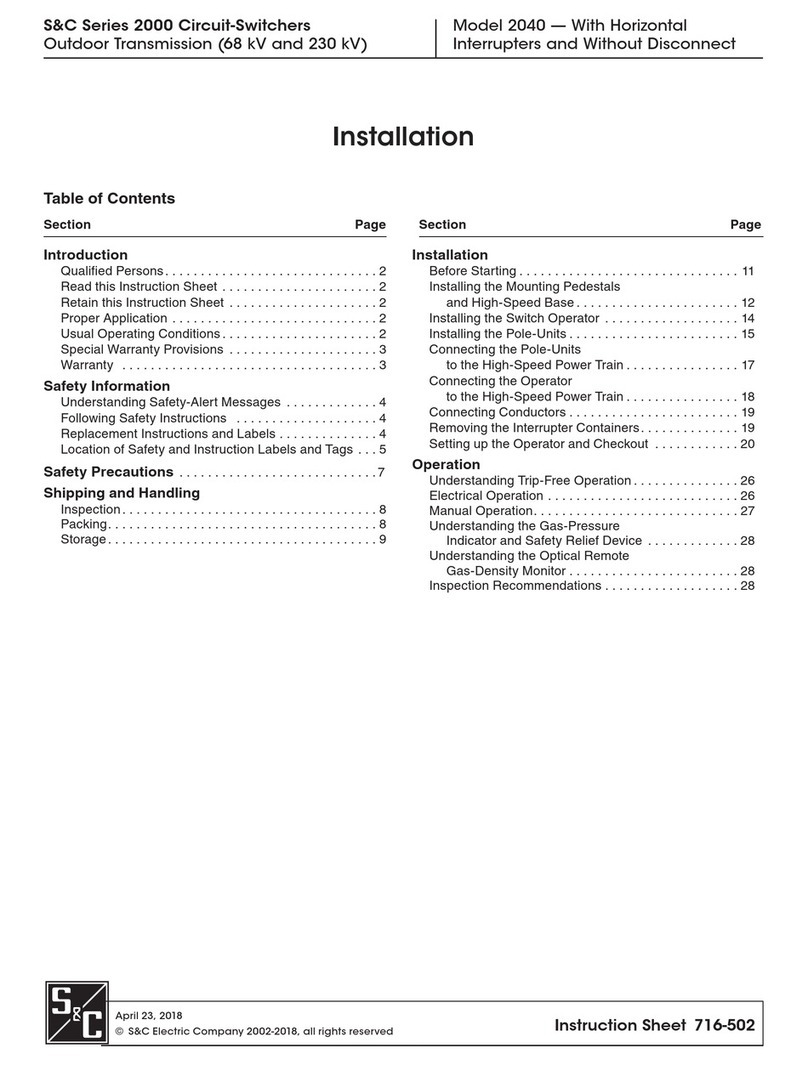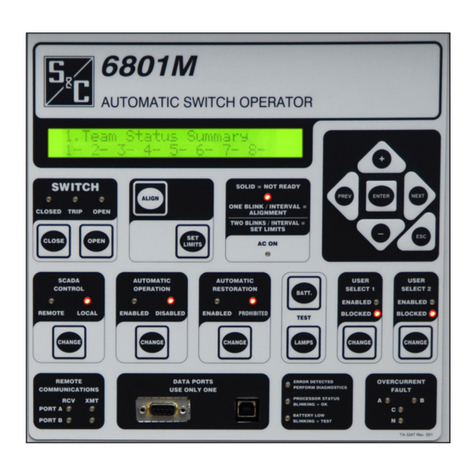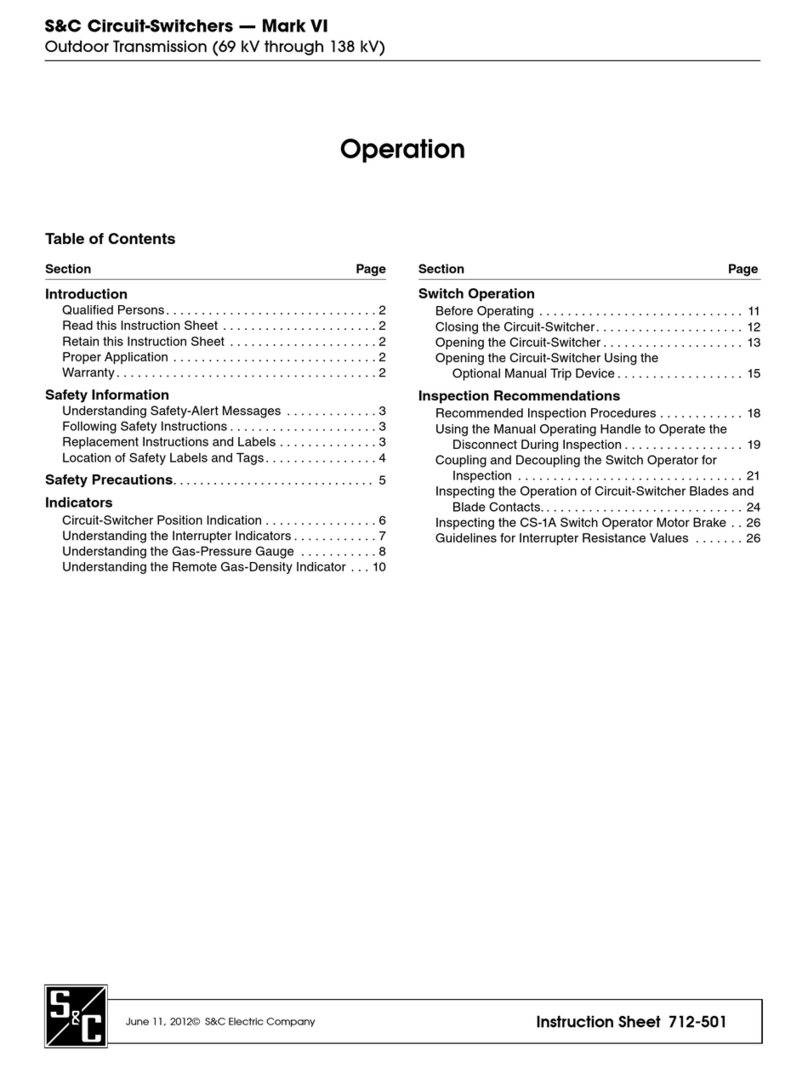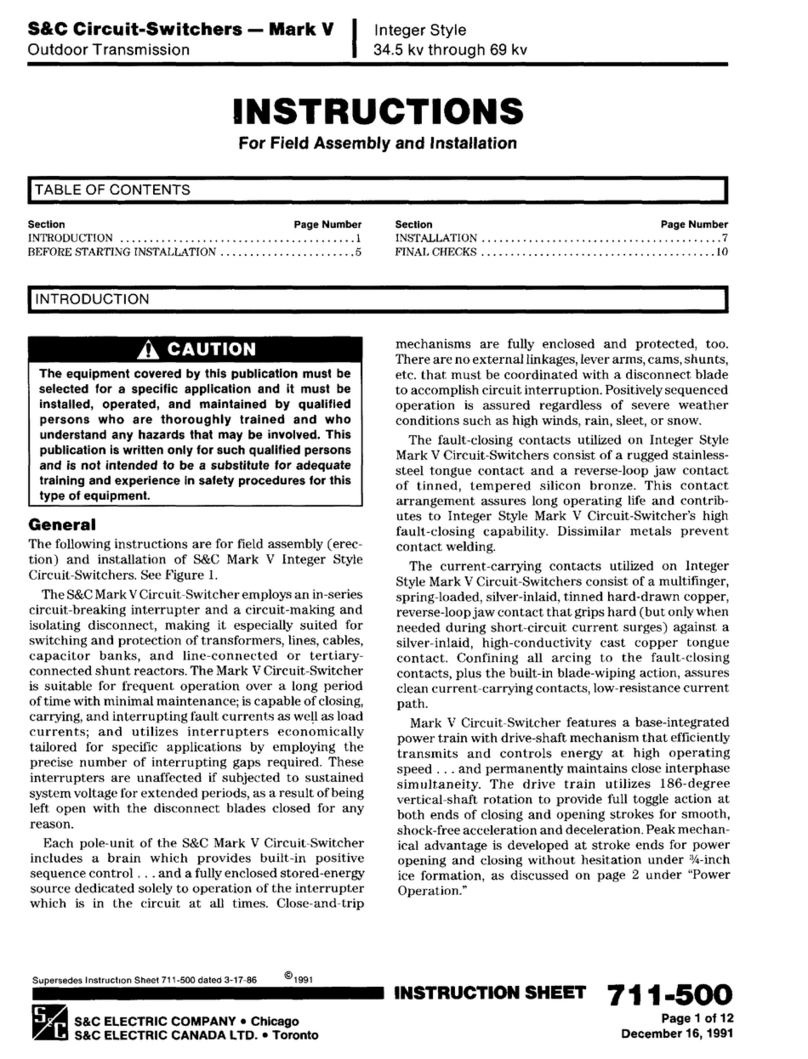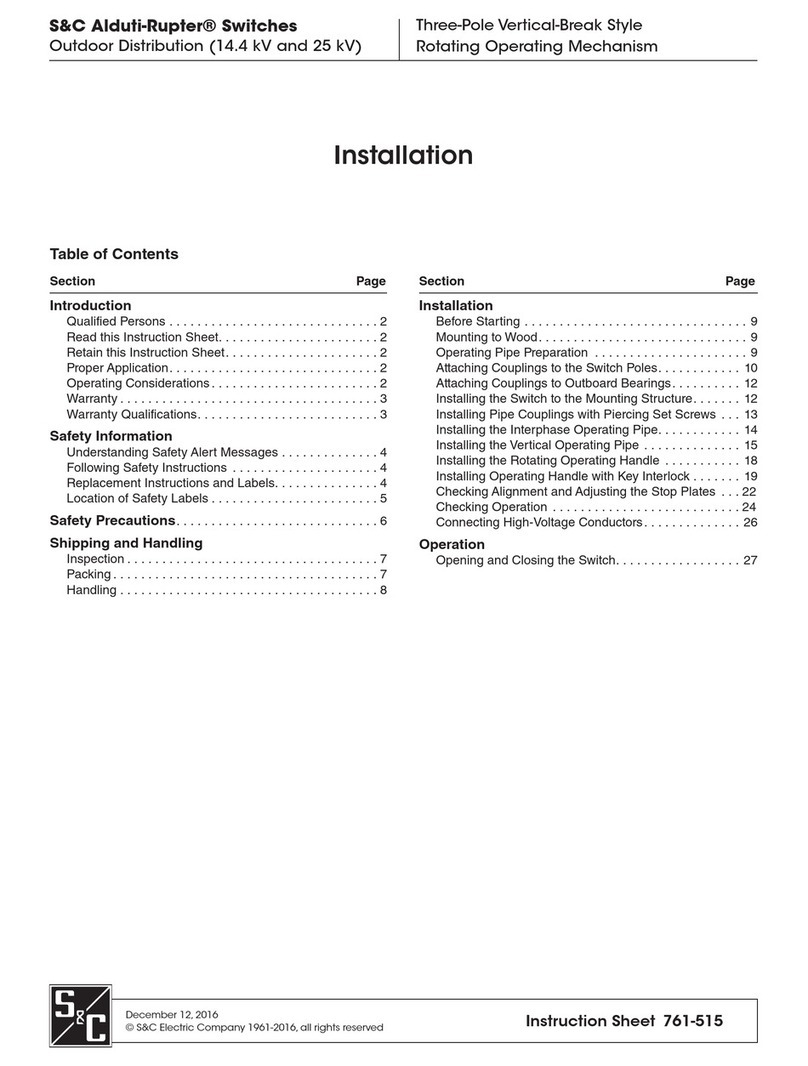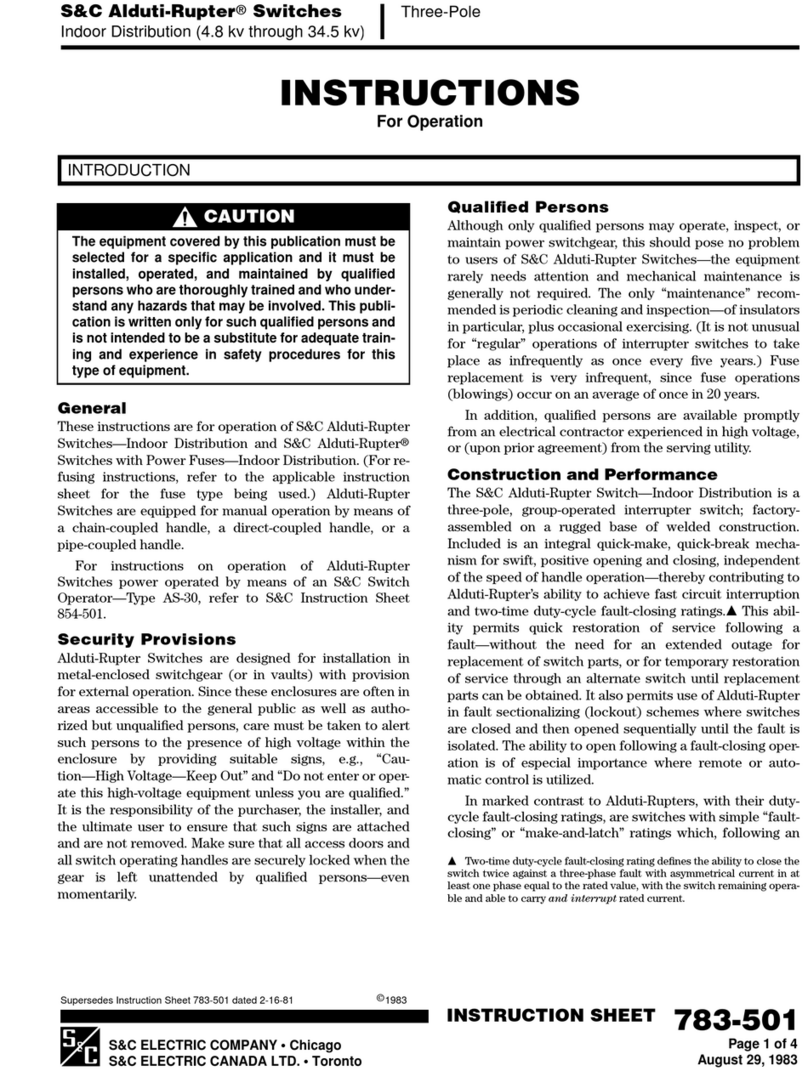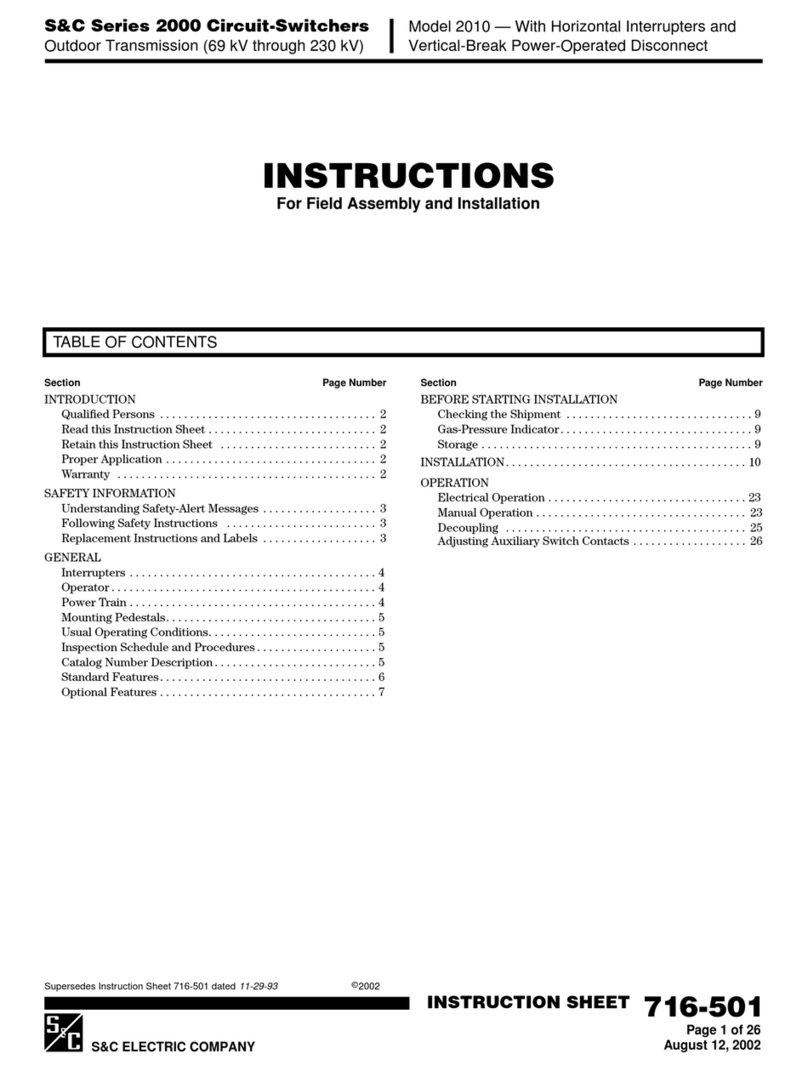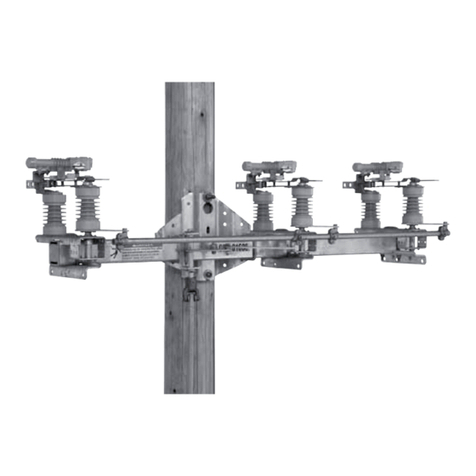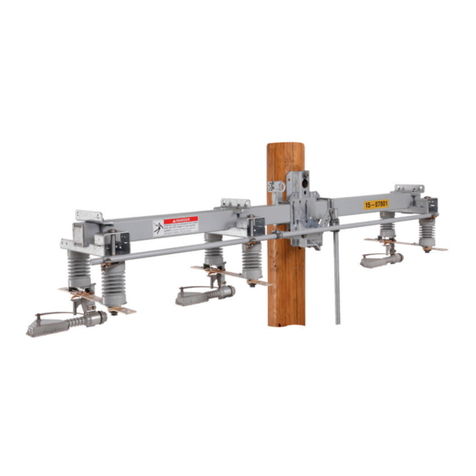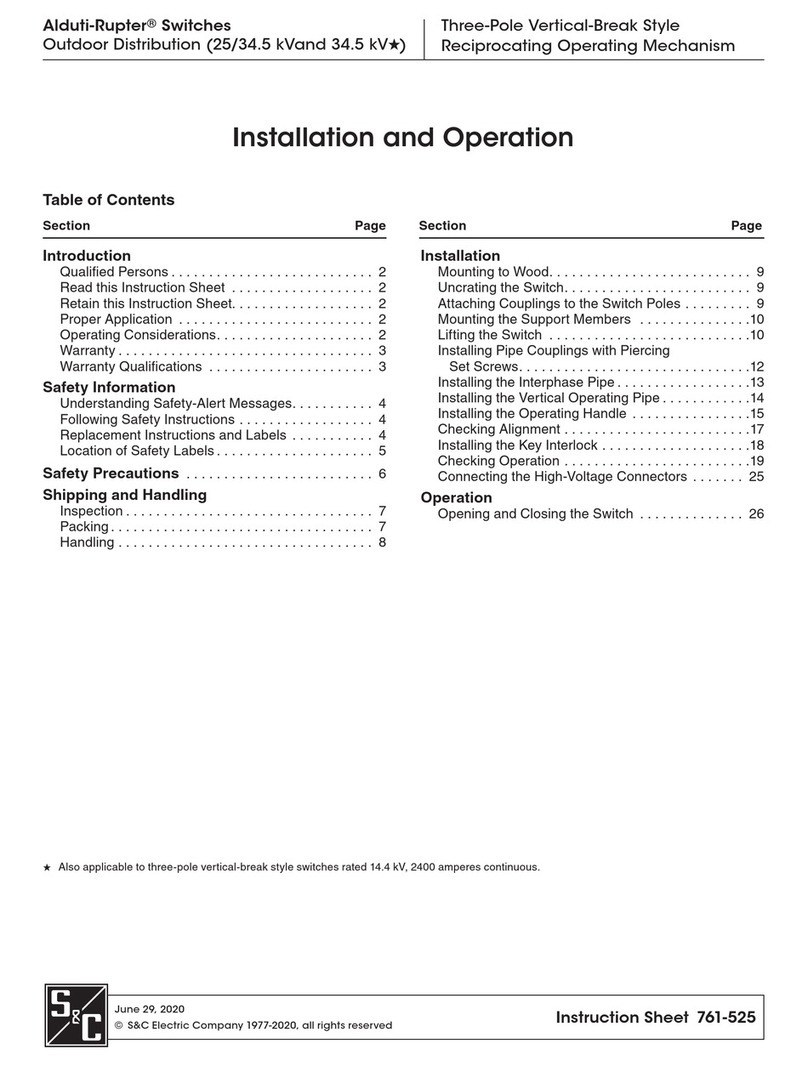
IINSTALLATION -Continued
Step
3
Mark the conduit-entrance location for the control-circuit
wiring
on
the
co
nduit-entrance plate in the bottom
of
the
switch operator enclosure. See Figure
2.
Remove
the
conduit-entrance
plat
e a
nd
cut
out
the
required opening. Replace
the
plate
and
make
up
the
entrance
fittings. Apply sealing
compound
(provided
with
each
switc
h
operator)
when
replacing
the
conduit-
e
ntranc
e plate. Verify
that
the
entrance
fittings
are
properly
sealed
to
prev
ent
water
ingress.
Pushbutton protective cover (closed)
uplex receptacle and convenience-
;iht lampholder with switch (Catalog
umber Suffix "-V")
1structions, switch operator
·avel-limit adjustment
Instruction
manual and holder
Step
4
A
CAUTION
Remove the two-pole pull-outfuseholders for the
motor
circuit and space-heater circuit. See Figure
2.
Failure to remove these fuseholders can result in
accidental energizing
of
the
operator
after the external
connectio
ns
have
been
completed.
Reinsert the fuseholders only when directed to do
so
in the
steps
that
follow.
Remove the blocking from the motor contactors.
I
Connect the external control-circuit wiring (including
space-heater
source
leads) to the terminal blocks
of
the
switch
operator
in accordance with the wiring diagram
furnished.
For
12-volt de models, mount the battery in the
batte
ry compartment and
connect
it to the battery cables
which are located
at
the
rear
of
the battery compartment.
Position-indicating lamps
(Catalog Number Suffix
"-
M
")
Brake-release solenoid
Terminal block
A
NOTICE
Space-heater circuit two-pole
pull-out fuseholder Space heater
These illustrations are not applicable
to 12-volt
de
models. Those models
utilize a number of different compo-
nent parts and a different internal
layout. Among the differences is
in-
clusion of a constant-burden battery
charger mounted
on
a swingout pan-
el,
as well as the use of a separate
two-pole control-source disconnect
switch
in
series with control-source
fuses (located
on
the inside rear
wall)
in
lieu of the motor-circuit two-
pole pull-out fuseholder. Those mod-
els, further, include a separate com-
partment beneath the enclosure,
which houses the 12-volt
de
battery.
S&C
ELECTRIC
COMPANY•
Chicago
S&C
ELECTRIC
CANADA
LTD.•
Toronto
INSTRUCTION
SHEET
769-500
Page 7
of
23
April 22, 1996
